Speed alone may not be the answer.

John Barsness
The first instrument for measuring bullet velocity appeared in 1742, when British mathematician Benjamin Robins developed the ballistic pendulum, a weight suspended on swinging arms. Robins calculated velocity based on how far a fired bullet pushed the weight, and published his results in New Principles of Gunnery, a book that helped create the science of ballistics. The first partially electric chronograph was developed in 1848, eventually leading to the affordable electronic chronographs shooters use today, but hunters’ obsession with muzzle velocity started in the 1890s.
The first practical smokeless rifle powders were loaded in various military rounds in the 1880s, providing such a velocity increase over black-powder cartridges that riflemen immediately noticed the flattened trajectory. (To paraphrase the famous line from The Treasure of the Sierra Madre, they didn’t need no stinkin’ chronographs.)
Smokeless hunting cartridges started appearing in the 1890s, and their flatter trajectories vastly reduced the effects of range estimation errors. Bullets from most black-powder cartridges dropped at least a couple feet between 100 and 200 yards, but early smokeless velocities of approximately 2,000 fps cut that in half.
Back then most American hunters preferred what many today call traditional lever-action rifles, and the Model 1894 Winchester in .30 WCF (.30-30 Winchester) became an immediate favorite. The original factory load used round nose, 160-grain bullets at a claimed 1,970 fps, but compared to the .44-40 and .4570, the .30-30 seemingly shot almost as a flat as a laser beam out to 200 yards (or would have, if lasers existed; the first functioning laser appeared in 1960).
Esta historia es de la edición July - August 2018 de Rifle.
Comience su prueba gratuita de Magzter GOLD de 7 días para acceder a miles de historias premium seleccionadas y a más de 9,000 revistas y periódicos.
Ya eres suscriptor ? Conectar
Esta historia es de la edición July - August 2018 de Rifle.
Comience su prueba gratuita de Magzter GOLD de 7 días para acceder a miles de historias premium seleccionadas y a más de 9,000 revistas y periódicos.
Ya eres suscriptor? Conectar
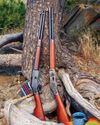
CIMARRON .32-20 Short Rifle & Carbine
In the heyday of Winchester Repeating Arms Company lever guns, it offered muskets, standard rifles, short rifles and saddle ring carbines.
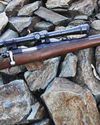
Remington's Model 722 and .222 Cartridge
It's easy enough to define what a varmint is, those pesky critters that tear up pastures, flower beds and all kinds of expensive crops people need for various reasons - most importantly, to make a living and/or something with which to feed themselves.

Coyote Bullets
What is Best for You?
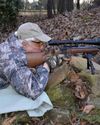
Remington's 5mm Rimfire Magnum
Shooting a Classic
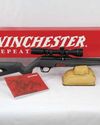
Winchester's New Wildcat
The Ultralight Rimfire Varmint Rifle

.223 Remington from .30-30 Winchester?
Multitasking for Varmints

LOADS FOR A .22 TCM
The .22 TCM first appeared commercially in 2012, chambered in a Rock Island Armory 1911-style handgun.
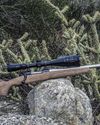
Everybody Loves Velocity
The 4,500-fps WSSM Project

A BOLT-ACTION FRANCHI 224 VALKYRIE
Testing New Loads
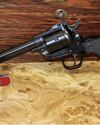
.22 Winchester Magnum Rimfire
Shooting Revolvers